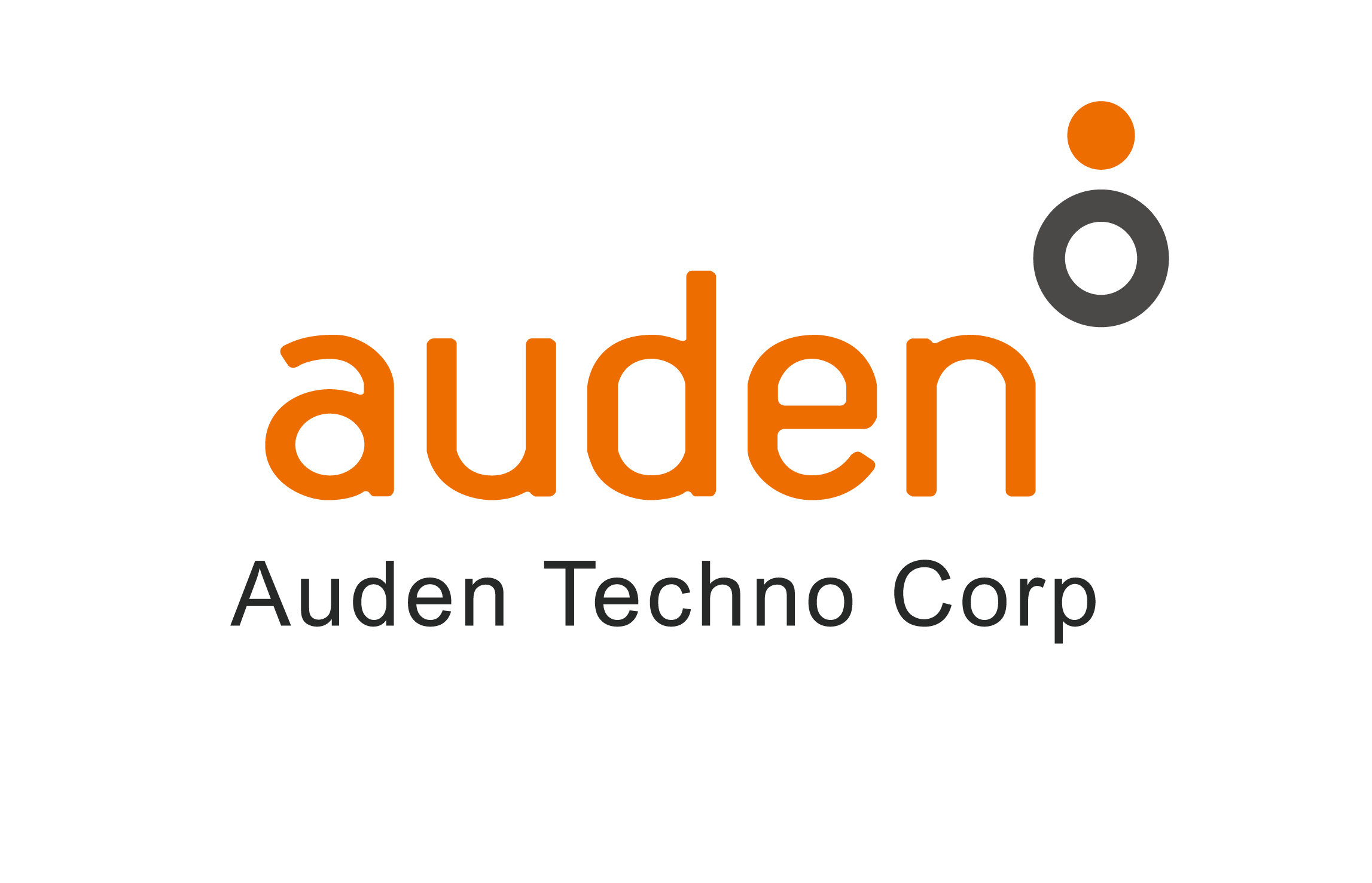Getting Acoustic Energy Precisely to its Target
Problem Description
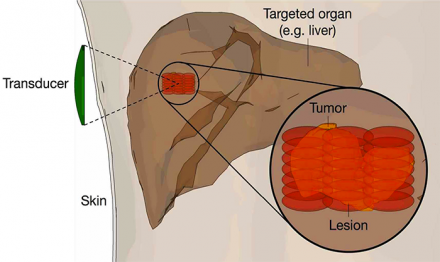
Schematic view of tissue ablation with a sonic knife in the liver.
Focused ultrasound (FUS) and high intensity FUS (HIFU) have found valuable application in a wide range of medical treatments: tumor ablation; treatment of epilepsy, movement disorder, and chronic pain; reversible blood-brain-barrier opening (e.g., to increase uptake of Parkinson drugs); clot lysis; and neurostimulation. They offer the potential of targeting locations deep inside the human body without requiring surgical access. The mechanisms can be thermal (e.g., thermal ablation) or non-thermal. Acoustic propagation is affected by bones, air cavities, and the general anatomy within the exposed domain, which can reduce the focusing ability and produce unwanted secondary foci. Phased array transducers allow for aberration correction, provided suitable steering parameters can be identified for a specific target shape, location and patient anatomy. Modeling enables investigation and design of novel applicators and patient-specific treatment planning.
Methodology
1. Comprehensive Modeling Framework
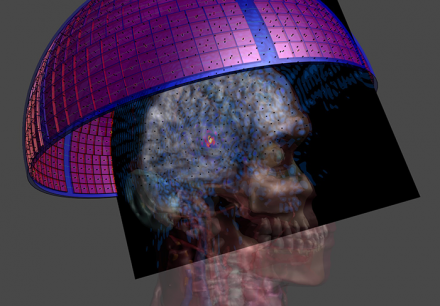
HIFU transducer array creating a thermal hot spot deep in the brain for tissue ablation during noninvasive brain surgery.
Sim4Life offers a comprehensive environment for image-based or anatomical model-based simulation of acoustic propagation, induced heating, and resulting effect quantification: The IMG and iSEG modules add support for image integration and image-based model generation. The Virtual Population (ViP) 3.0 anatomical phantoms offer the most detailed and accurate representations of the patient population for device design or in-depth analysis. The P-THERMAL module adds a solver optimized for the modelling of thermal phenomena in living, blood-perfused tissue, while T-CEM43 adds thermal dose and effect assessment models for the quantification of thermal tissue damage and treatment efficacy. For more detail see Thermal therapies.
P-ACOUSTICS seamlessly integrates with all this functionality and permits full-wave modelling of acoustic propagation in the human body or artificial structures at unprecedented resolution and problem size. This is possible thanks to the use of high performance computing (HPC) techniques that harness the power of one or multiple graphics processing units (GPU) cards to accelerate the simulations by orders of magnitude.
2. Focusing & Treatment Planning
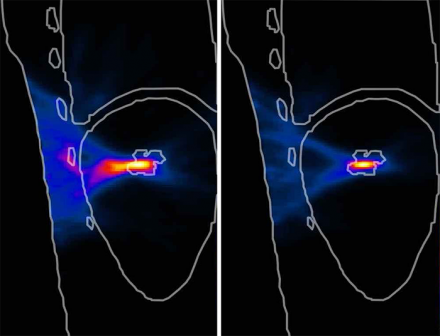
Focus optimization in Sim4Life.
Sim4Life has been applied to investigate ways of improving focusing, especially in the context of transcranial focused ultrasound, where applicators with over a thousand ultrasound transducers are used to target locations deep in the brain without opening the skull. Various focusing approaches have been investigated and compared. Superior results, also in comparison with clinically applied methods, were obtained by using the virtual source approach (also known as time reversal technique), where an initial simulation is performed with a source at the target location while recording the incoming pressure wave at the transducer elements. For the real sonication, these signals are then conjugated and applied.
Sim4Life allows to compensate for the impact of skull induced aberration and focus shifting and even enables considering the inhomogeneous nature of the skull bone based on computed tomography (CT) image data. The results indicate the possibility of considerably extending the envelope of treatable regions in the head.
When modeling HIFU tumor ablation in the liver, the virtual source approach was combined with a 4D animated anatomical model, where breathing motion was extracted from MRI images and applied to warp the body model. This allows to study the importance of motion tracking. Furthermore, the virtual source approach is successful in reducing collateral damage to the ribs, as assessed using the T-CEM43 model in combination with thermal modeling.
3. Volume Scanning
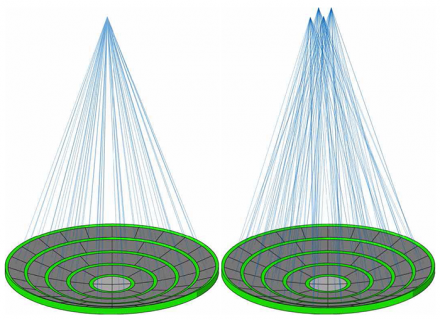
Focus optimization with a transducer array.
Sim4Life acoustic modeling can be used to explore strategies to cover large treatment areas, e.g., to achieve hyperthermia cancer treatment. For example, it could be demonstrated that very similar treatment outcomes can be achieved using sequential sonication (successive scanning of the tumor volume with the focus) and volumetric sonication (rapid interleaving of foci placements), but that the latter can be achieved within half the treatment time. Also, the concept of unstructured meshing-based tumor volume coverage strategies as superior alternative to the commonly applied regular placement of sonications on a rectangular grid was proposed based on modeling. In addition to reducing the number of required sonications, this approach naturally offers the possibility of improving thermal coverage near cooling vessels by using adaptive mesh refinement, as assessed using thermal modeling.
4. Device Design
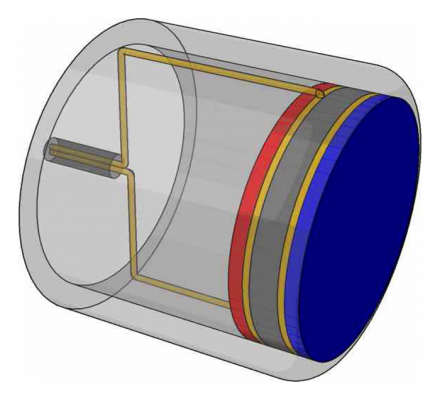
CAD model of a transducer for simulation in Sim4Life..
Simulations have been used to investigate and design new acoustic transducers. This includes a novel design with an acoustic blade-like focus for mostly superficial interventions. Another applicator developed using Sim4Life uses random placement of transducer elements to reduce notorious side-lobes and produce a more localized focus. Sim4Life P-ACOUSTICS already offers templates for common applicator array designs.
5. Verification & Validation
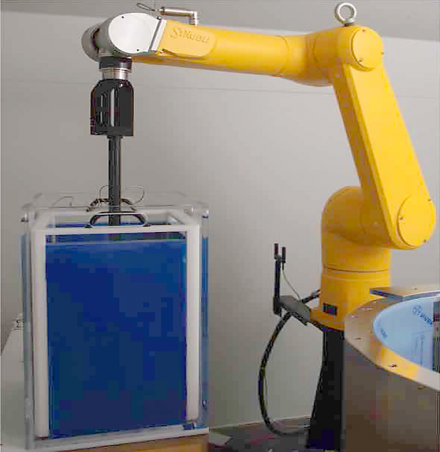
Validation of the simulation in a measurement setup.
Sim4Life P-ACOUSTICS has undergone extensive and document verification and validation. The correctness of the implementation has been verified by identifying all relevant physical and numerical phenomena and comparing simulation results against analytical and numerical reference solutions that critically test these. To ascertain that the simulated equation captures reality, a dedicated validation setup has been built that permits 3D, robot-supported, acoustic interference field measurements in the wake of multiple obstacles with varying shape and material properties placed in and near the acoustic focus. Extensive uncertainty quantification has been performed and used to confirm the excellent agreement between measurements and simulations.
In addition, hydrophone measurements were used to compare the predicted and measured pressure distribution while designing a novel linear acoustic ablation device.
Publications
- Kennedy, J. E., G. R. Ter Haar, and D. Cranston. “High intensity focused ultrasound: surgery of the future?.” The British journal of radiology (2014).
- Jolesz, Ferenc A. “MRI-guided focused ultrasound surgery.” Annual review of medicine 60 (2009): 417.
- Kyriakou, Adamos, et al. “A review of numerical and experimental compensation techniques for skull-induced phase aberrations in transcranial focused ultrasound.” International Journal of Hyperthermia 30.1 (2013): 36-46.
- Kyriakou, Adamos, et al. “Full-wave acoustic and thermal modeling of transcranial ultrasound propagation and investigation of skull-induced aberration correction techniques: a feasibility study.” Journal of therapeutic ultrasound 3.1 (2015): 1-18.
- Neufeld, Esra, et al. “Modeling, effect prediction, and planning for EM-and FUS-based thermal treatment.” Antennas and Propagation (EuCAP), 2014 8th European Conference on. IEEE, 2014.
- Paulides, Margarethus M., et al. “Simulation techniques in hyperthermia treatment planning.” International Journal of Hyperthermia 29.4 (2013): 346-357.
